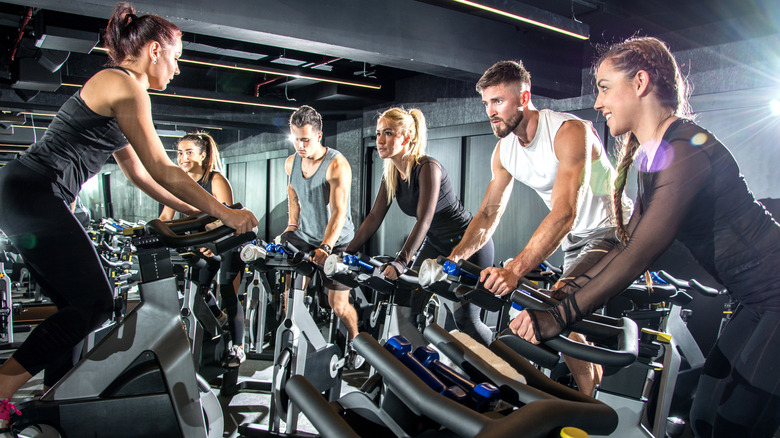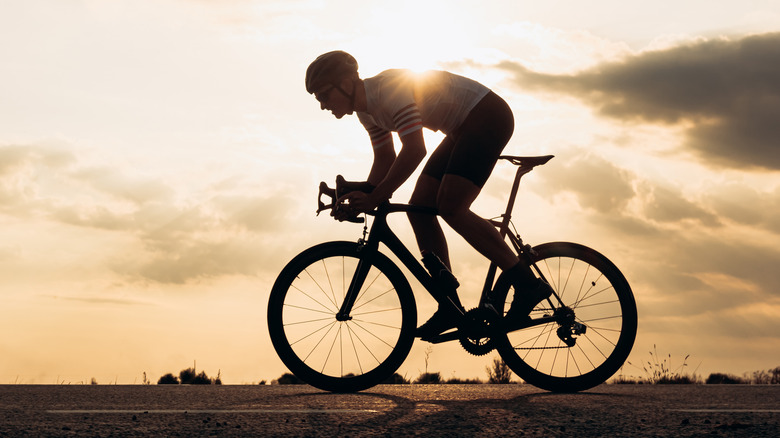Is Cadence Or Resistance More Important During A Cycling Workout?
Your favorite indoor cycling instructor might call out a certain cadence during a workout, but you can't pedal that fast because the dial is way too high. Which do you choose — dialing the resistance down to allow you to pedal faster, or keep mashing the pedals to feel that great burn in your legs?
Because your cycling cadence, also known as rpm, and resistance work in tandem with one another, you'll want to focus on proper cadence first, then increase resistance (via Peloton). This is because a higher cadence gets your heart pumping and increases its capacity to hold more blood. That's more blood that gets shuttled to your working legs. And when your leg muscles build more energy, they produce mitochondria, which means you can sustain longer workouts and burn more calories.
However, your cycling cadence shouldn't have you bouncing around the saddle, so you'll need to put enough resistance on the pedals to keep you from bouncing (via Cycling Weekly).
What cadence is ideal for cycling?
Turns out, the ultimate cadence suited for cycling all depends on your body type and level of cycling fitness, according to Bicycling. People who are more muscular might be fine mashing the pedals to get more force out of their workout, but leaner or less muscular people should opt for a higher cadence. If you're a beginning cyclist, you'll begin at a lower cadence and work to move the pedals faster. Beginning cyclists with a lot of muscle should aim for the 75 to 85 rpm range. Experienced cyclists usually ride at 95 rpm or faster. If you ride outdoors, your rpm will be a little slower than indoors (via Cycling Weekly).
You might even be tempted to jack up your rpm to give you a better cardio workout. According to a 2019 study in the International Journal of Sports Medicine, too high of an RPM before you're ready can result in diminishing returns. The study tested people of varying cycling experience and found that recreational cyclists become less efficient at cycling cadences of 90 rpm (via King's College London). Luckily, you can gradually improve your cadence with short bursts above 100 rpm (per Cycling Weekly).
Is there a benefit of low cadence in building strength?
If you're looking to build more force and strength, you could opt for a cadence of 50 to 60 rpm at a high resistance for a few workouts, but fatigue will come quickly (via Outside). Your muscles require more glycogen at cadences below 85 rpm (per Bicycling). Be careful with low cadence and high resistance on the bike, though. Your legs might not have the strength to handle the extra force, so your hips and knees might bear much of the work, explains Peloton.
You can improve your strength on the bike by doing short drills at a cadence of 70 rpm until you get used to the heavy resistance, according to Cycling Weekly. Gradually, you'll add more resistance as you lower your cadence to 40 to 50 rpm.
To improve overall fitness and lose some weight in a cycling workout, look to extend your time on the bike by finding an effort you can hold for 10 to 15 minutes (via Outside). Recover for a few minutes, then repeat twice. This is better than one short, hard cycling session.


